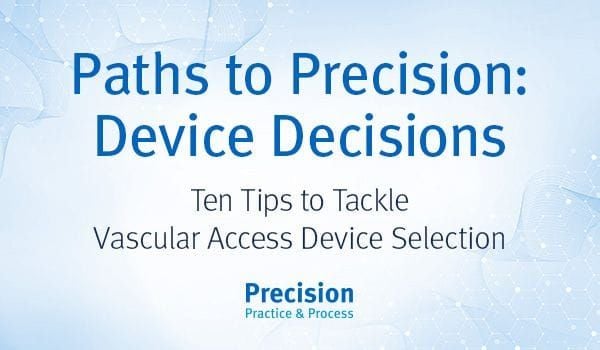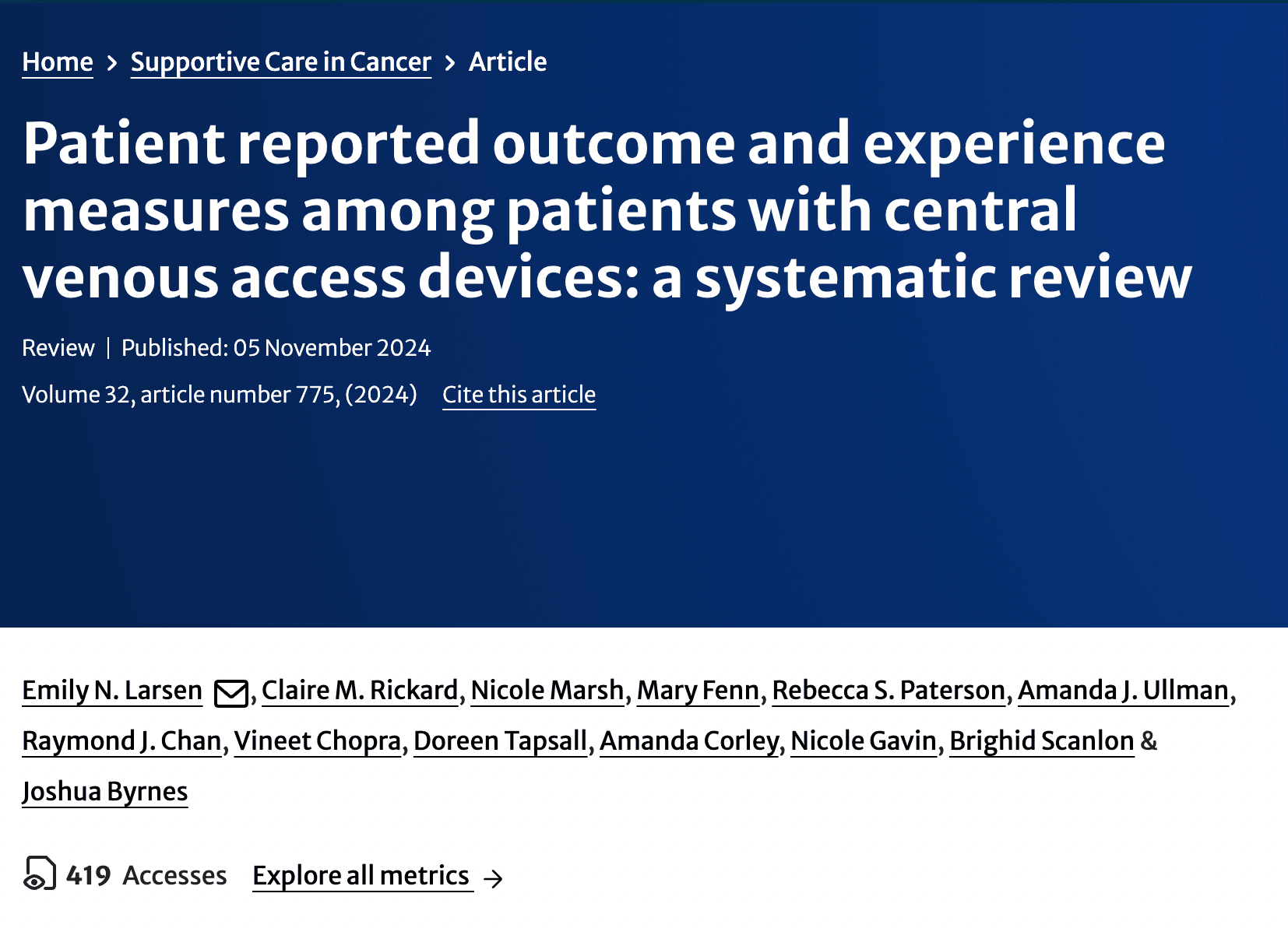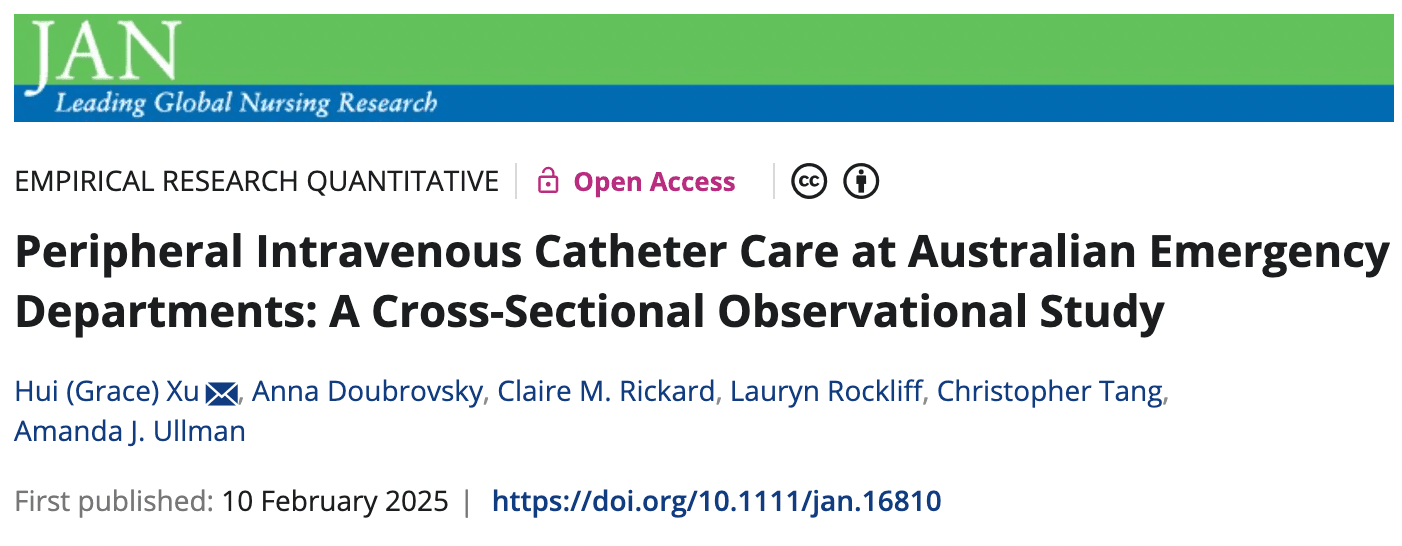Comparing PICC Materials: Do New Innovations Reduce Catheter Failure?
Posted
on 15 April 2025
Peripherally inserted central catheters (PICCs) are widely used in both adult and pediatric patients, but complications like infections, thrombosis, and occlusions remain a concern. A recent randomized controlled trial compared different catheter materials to determine whether new technologies could reduce PICC failure rates.Study Overview
The trial included 1,098 patients across three Australian hospitals, randomly assigned to receive one of three types of PICCs:Hydrophobic PICC
Chlorhexid...
The trial included 1,098 patients across three Australian hospitals, randomly assigned to receive one of three types of PICCs:Hydrophobic PICC
Chlorhexid...
Paths to Precision – Choosing the Right Vascular Access Device
Posted
on 10 April 2025
)
Selecting the appropriate vascular access device is crucial for effective patient care and treatment outcomes…Continue Reading: https://www.icumed.com/about-us/clinical-connections/vascular-access/paths-to-precision-device-decisions/ *. ICU Medical has provided grant funding to AVATAR...
Recurrent Peripheral Intravenous Catheterization in Neonates: A Case Series
Posted
on 8 April 2025
Neonates requiring multiple peripheral intravenous catheter (PIVC) insertions face high failure rates and increased discomfort. A recent study examined 19 neonates in an Australian NICU, revealing key challenges in neonatal vascular access.Key Findings
Low birth weight neonates (median 728g) needed frequent PIVC insertions.
57% of PIVCs failed, mainly due to infiltration, occlusion, and dislodgement.
Median dwell time: 49 hours, with 58% of failed catheters requiring reinsertion.
Hand (41...
Low birth weight neonates (median 728g) needed frequent PIVC insertions.
57% of PIVCs failed, mainly due to infiltration, occlusion, and dislodgement.
Median dwell time: 49 hours, with 58% of failed catheters requiring reinsertion.
Hand (41...
Placement Precision – Why Site Selection Matters
Posted
on 3 April 2025
)
Gaining vascular access is the critical first step in ensuring that medication is delivered as prescribed, but keeping that access reliable throughout treatment is equally critical…Continue Reading: https://www.icumed.com/about-us/clinical-connections/vascular-access/placement-precision-where-to-start/* ICU Medical has provided grant funding to AVATAR...
Central Venous Access Device Failure: Incidence and Risk Factors in Hospitalized Adults
Posted
on 1 April 2025
)
Central venous access devices (CVADs) are essential for delivering medications, fluids, and monitoring patients in hospital settings. However, CVAD failure remains a significant challenge, leading to infections, complications, and increased healthcare costs. A recent multivariable analysis of 1,892 CVADs sheds light on the key risk factors associated with device failure and highlights areas for improvement in vascular access care.
Study Overview
This study analyzed data from hospitalized adu...
This study analyzed data from hospitalized adu...
Developing a Tool to Improve Central Venous Access Device Skin Care
Posted
on 25 March 2025
)
Central venous access devices (CVADs) are essential in healthcare, but they often come with risks, including skin impairments. Addressing this issue, researchers have developed and validated a classification tool to identify and manage central venous access device-associated skin impairment (CASI).
Study Overview
This study aimed to create a reliable and evidence-based tool to classify CASI and guide clinical decision-making. Using a two-phase modified Delphi method, experts reviewed literat...
This study aimed to create a reliable and evidence-based tool to classify CASI and guide clinical decision-making. Using a two-phase modified Delphi method, experts reviewed literat...
Understanding Patient-Reported Experiences with Central Venous Access Devices
Posted
on 18 March 2025
)
Central venous access devices (CVADs) play a crucial role in treating patients with cancer, chronic illnesses, and other complex conditions requiring long-term intravenous therapy. However, the patient experience and outcomes associated with these devices are often overlooked. A new systematic review explores patient-reported outcome measures (PROMs) and patient-reported experience measures (PREMs) related to CVADs, shedding light on the real-world challenges faced by patients.
Study Overvie...
Improving First-Time PIVC Insertion Success in Hospitalized Pediatric Patients
Posted
on 11 March 2025
)
Peripheral intravenous catheters (PIVCs) are a critical part of pediatric care, but achieving first-time insertion success remains a challenge. Multiple failed attempts not only delay treatment but also increase complications, distress, and healthcare costs. A recent prospective cohort study explored the impact of patient characteristics, techniques, and technology on first-attempt PIVC insertion success in hospitalized children.
Study Overview
This study was conducted at a large quaternary ...
This study was conducted at a large quaternary ...
Peripheral Intravenous Catheter Care in Australian Emergency Departments: Are We Meeting Standards?
Posted
on 4 March 2025
)
Peripheral intravenous catheters (PIVCs) are one of the most commonly used medical devices in emergency departments (EDs), yet adherence to best practices remains inconsistent. A recent cross-sectional observational study investigated how well Australian ED clinicians follow the PIVC Clinical Care Standard introduced in 2021. The findings reveal significant gaps in practice, emphasizing the need for improvement in patient partnership, insertion techniques, and documentation.
Study Overview
T...
T...
Challenges of Recurrent Peripheral Intravenous Catheterization in Neonates
Posted
on 25 February 2025
Neonatal care often requires the use of peripheral intravenous catheters (PIVCs) to deliver critical treatments. However, for some neonates, recurrent PIVC insertion is necessary, presenting unique challenges for clinicians and caregivers. A recent case series highlights the clinical characteristics of neonates requiring multiple PIVCs during hospitalization and explores ways to improve care for this vulnerable population.
Study Overview
The study analyzed data from neonates admitted to an A...
The study analyzed data from neonates admitted to an A...








